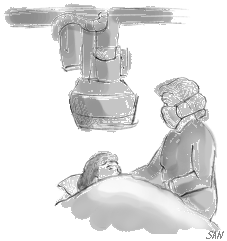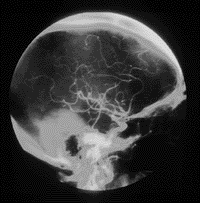


Introduction
Angiography is a special X-ray procedure that takes pictures ("angiograms") of your blood vessels. It is usually done by inserting a catheter into an artery or vein in your groin. In some cases another site is selected; if so, the radiologist will discuss this with you.The catheter is a small, flexible, hollow tube about the size of a thin strand of spaghetti. The radiologist carefully threads it into your blood vessel and guides it to the area to be studied. He watches the catheter moving through your blood vessels on a special X-ray television screen. When the catheter reaches the site under investigation, X-ray dye is injected through the catheter. This clearly outlines the blood vessels and enables the radiologist to see any irregularities or blockages.

What will I feel during my angiogram?
The nurse will give you some intravenous medications to help relax you and make you more comfortable. Just as you cannot feel blood flowing in your body, you will not feel the catheter moving inside your blood vessels. When X-ray dye is injected, you may feel a warm or hot flushed feeling. This is a normal response and passes in a few seconds.

What can I expect after my angiogram?
After your angiogram your nurse will check on you frequently. She'll take your vital signs, check the puncture site, and check your foot pulses.